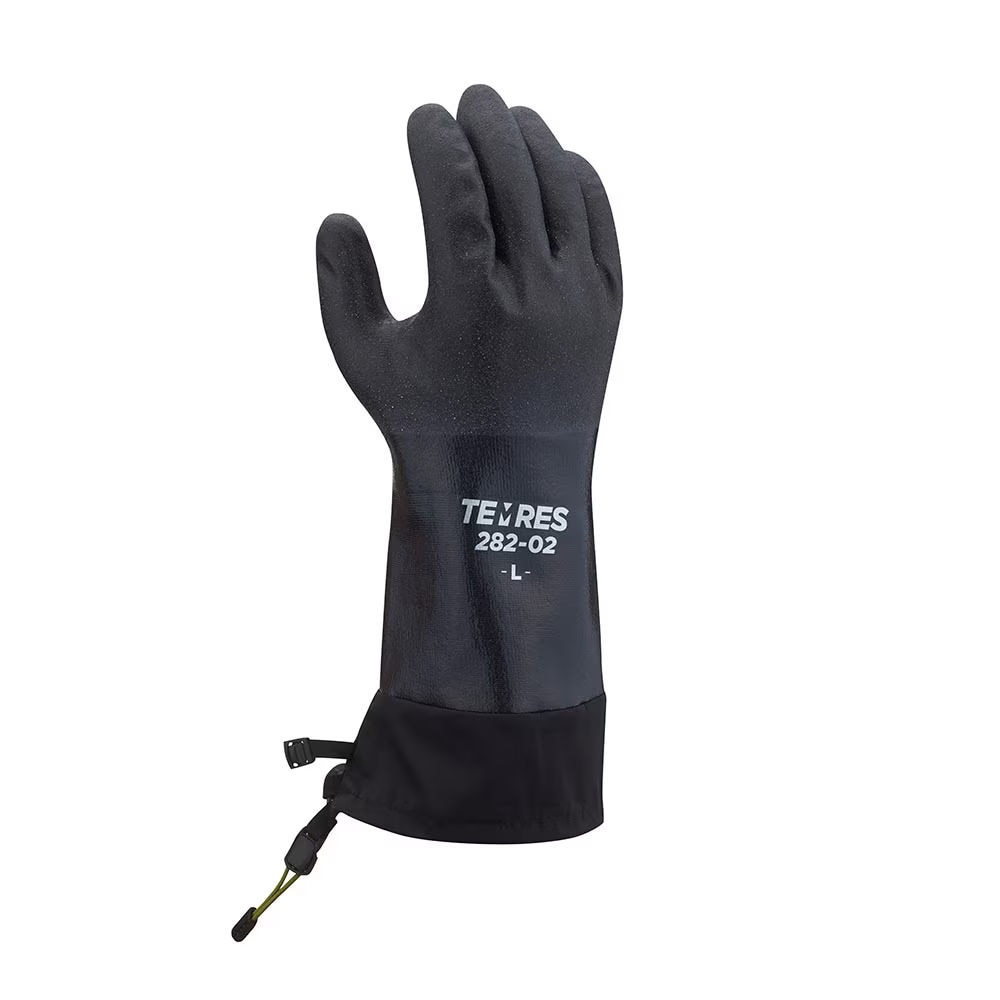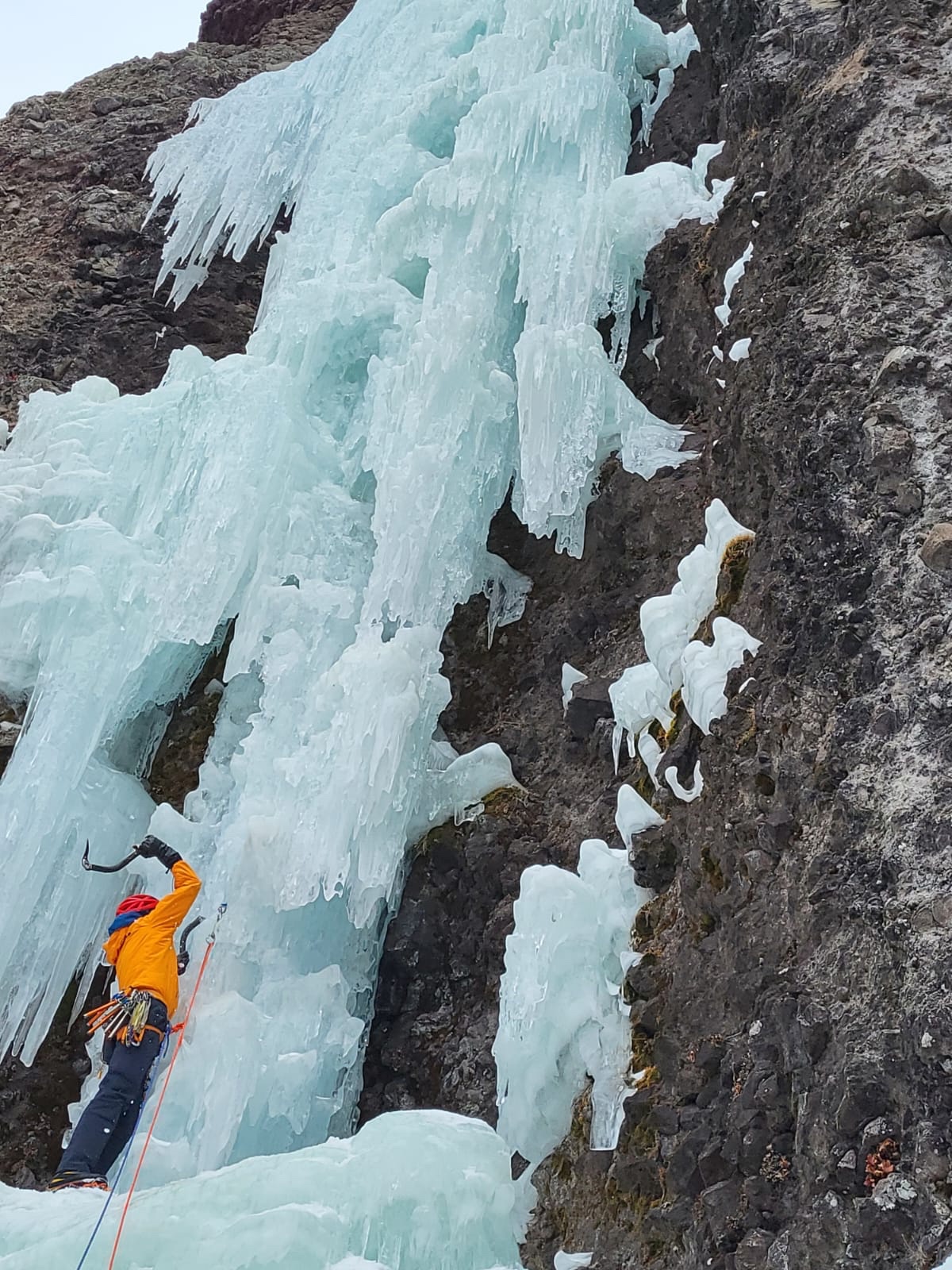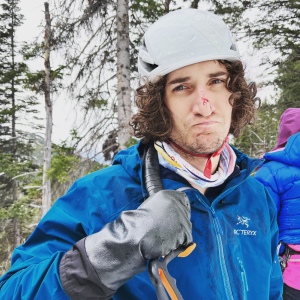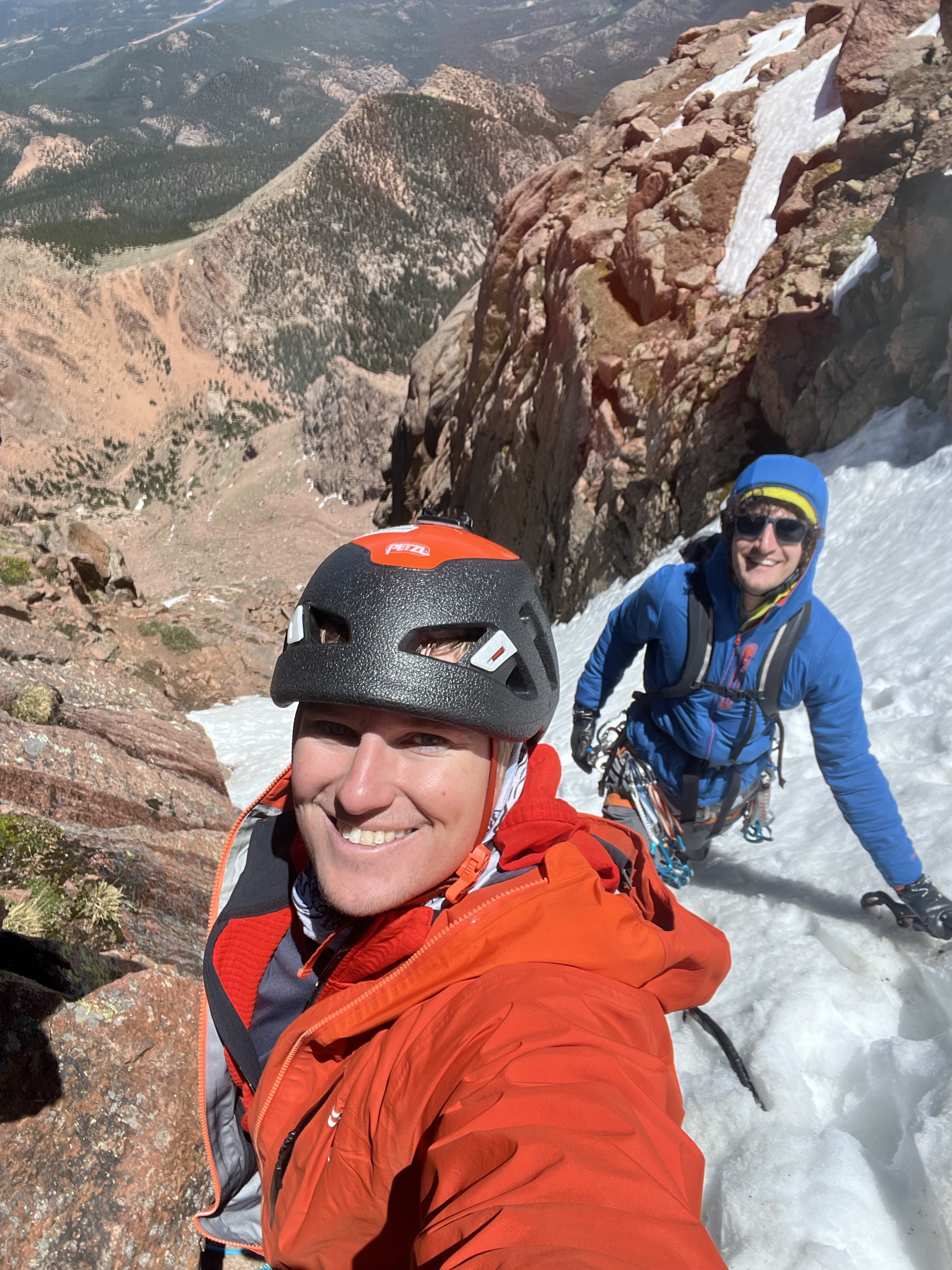I keep getting asked questions about my gloves at the crag, so I’m writing this article to share my opinions on the Showa gloves for ice climbing. If you aren’t an ice climber you can fully ignore this article, as we’re about to get pretty nerdy on these gloves.
Showa Temres 282-02 Review

What: Showa 282-02 Temres Glove
Where to buy: Amazon (affiliate link) or Go2Marine
Why: Cheap, waterproof, gauntleted glove works well for lead ice climbing
Why Are The Showas Popular?
The Showa gloves, which were originally designed for use on fishing boats, have been gaining popularity in ice climbing circles for the past few years, mostly due to their cheap price. Gloves sold by climbing companies range from $60-$200, and a frequent ice climber can expect to burn through a pair of gloves in a season or two. The Showa gloves cost around $25 a pair (depending on where you buy them), and many people think they perform just as well as the boutique options for climbing.
In short: they’re cheap, waterproof, and dextrous.
The Good of the Showa Gloves

I’ve used the gauntleted black Showa 282-02 gloves for the past two years as my primary ice climbing gloves. I’ve found little to complain about. The gloves are thin, but thanks to their fleece lining, I find them acceptable to use in temperatures down to about 10F (-12C). Due to their rubber exterior, they are truly 100% waterproof, essential for extremely wet pitches.
My primary use for these gloves is as a lead climbing glove, where dexterity is more important. However, if temperatures are warm, I often will not even change out of these gloves to belay. Of course, this depends on a number of things such as personal cold tolerance, humidity, amount of snow, etc. I always carry an extra pair of belay gloves, but generally don’t use them if temperatures are around or above 30F (0C).
The gloves are extremely maneuverable, which is perfect for placing ice screws and doing rope work. I find they catch on the spinner handles of Black Diamond Express ice screws, specifically, but they work fine on all other brands I have tried. I’ve even been able to use these gloves for drytooling in Vail and Hyalite Canyon.
Surprisingly, I have also found these gloves are quite durable. A single pair will last more than a season with 40-50 days out climbing. In fact, in my experience, the biggest danger with these gloves is your partners stealing them! (Okay okay, I gifted my spare pair to a buddy… he loved them and I regretted it once my other pair did eventually wear out). The part of these gloves most likely to wear out is the fleece inner, which over time will develop holes in the finger tips.
The cinched gauntlet closure on the 282-02 is a great addition over the original 282 gloves (the bright blue ones, sometimes referred to as “Smurf gloves”). The cinched gauntlet is perfect at keeping snow or dripping water from getting into the glove, which makes a big difference. I like to cinch my gloves closed over my hardshell jacket, which looks a little silly but does the job. Some people I know prefer to close their gloves inside their hardshell sleeves.
The Showas also kind of work with touch screens – they’re not explicitly designed for this, but I find that I can open up my camera on my iPhone without taking off my glove, most of the time. You wouldn’t be able to write a long text message, but for one or two taps I can usually get them to work.
The Bad Traits of the Showa Gloves For Ice Climbing

Probably the worst thing about these Showa gloves is that they look silly. Climbing partners clown on me pretty frequently. “You look like Dexter”, is maybe the most common comment. (Dexter is a TV show about a serial killer who often wears surgical gloves).
I have noticed is that I get the “screaming barfies” a little more frequently with these gloves than with other models. A friend suggests this might be due to the thermal properties of the rubber outside, saying that the rubber “feels” cold. That’s monkey science, but who knows. Could be. I should note that I usually only get the barfies once I finish a pitch – I have not found the gloves so cold that they interfere with my leads.

They are excellent for pure waterfall ice climbing, but I don’t like to use the Showa gloves if I expect my day will involve a lot of snow groveling. They are so thin that contact with powder snow will quickly numb out your hands.
The rubber exterior doesn’t vent sweat very well, so on particularly hot days (spring in Colorado), where your hands are sweating, the gloves can become clammy. This is something to keep an eye on.

A major downside which does merit mentioning is that these gloves only come in sizes M-XXL (8-11). I know several women who have said that these gloves don’t come in sizes small enough to fit them. I wear a size L (9), which fits me just about perfect. Showa has published a size chart, here, which you can use to see which size (if any) is right for you.
One more problem is that these gloves are a little difficult to find. You won’t find these gloves at places like REI, Backcountry, or your local shop. Amazon now sells them, which is great, but I have always ordered from Go2Marine in the past, and never had any complaints. At the time of writing, the gloves are cheaper on Go2Marine ($23 on Go2Marine vs $33 on Amazon), but shipping is extra at Go2Marine.
The Final Word on the Fishing Gloves
They aren’t perfect, but I think these Showa Temres 282-02 gloves are definitely worth trying out, if they come in your size. They sort of exist in a class of their own, without any direct parallel models made by climbing companies. For $25, it’s hard to argue it’s not worth trying. Chances are, even if you don’t like them, you can sell them to a fellow climber who’s too lazy to order them online for a very minimal loss.
Currently, the best places to buy these gloves online are Go2Marine, and Amazon (affiliate link).
Do you have an opinion on these fishing gloves for ice climbing? Know of a better place to buy them? Leave a comment!

